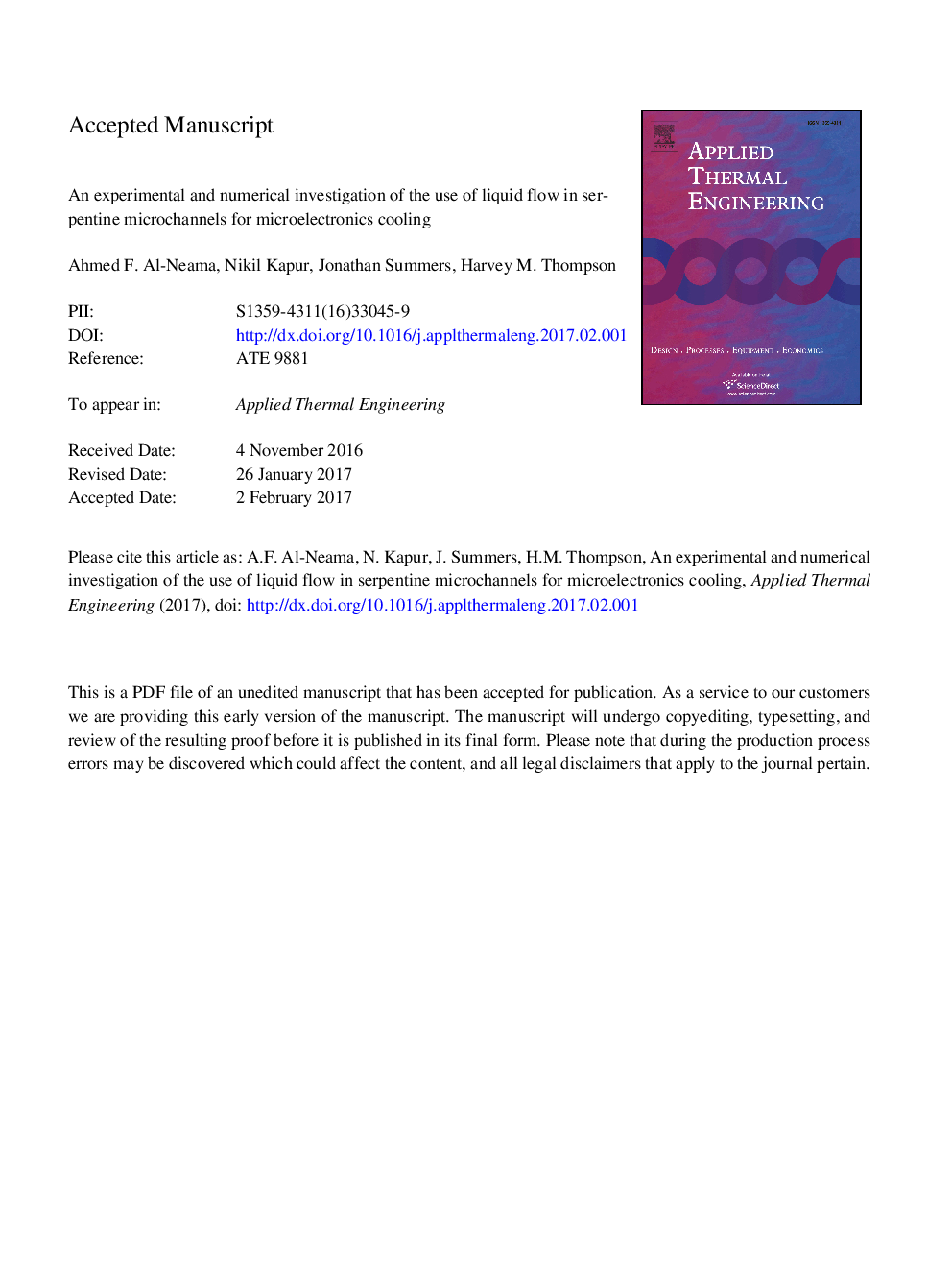| Article ID | Journal | Published Year | Pages | File Type |
|---|---|---|---|---|
| 4991475 | Applied Thermal Engineering | 2017 | 24 Pages |
Abstract
This paper presents a combined experimental and numerical investigation of single-phase water flow and heat transfer in serpentine rectangular microchannels embedded in a heated copper block. The performance of four different microchannel heat sink (MCHS) configurations are investigated experimentally, the first having an array of straight rectangular microchannels (SRMs), while the other have single (SPSMs), double (DPSMs) and triple path multi-serpentine rectangular microchannels (TPSMs). Three-dimensional conjugate heat transfer models are developed for both laminar and turbulent single-phase water flows in each of these MCHSs and the governing flow and energy equations solved numerically using finite elements. The numerical predictions of pressure drop (ÎP) and average Nusselt number (Nuavg) are in good agreement with experimental data, and indicated that the single path serpentine microchannel (SPSM) leads to a 35% enhancement of the Nuavg at a volumetric flow rate of 0.5l/min and a 19% reduction in total thermal resistance (Rth) compared to the conventional SRM heat sink. However, this enhancement is at the expense of a large (up to ten-fold) increase in ÎP compared to the SRM heat sink, so that a suitable compromise must be struck between heat transfer and pressure drop in practical MCHS designs.
Related Topics
Physical Sciences and Engineering
Chemical Engineering
Fluid Flow and Transfer Processes
Authors
Ahmed F. Al-Neama, Nikil Kapur, Jonathan Summers, Harvey M. Thompson,
